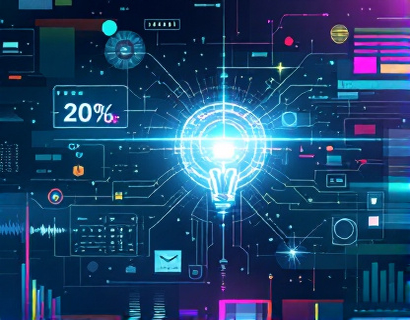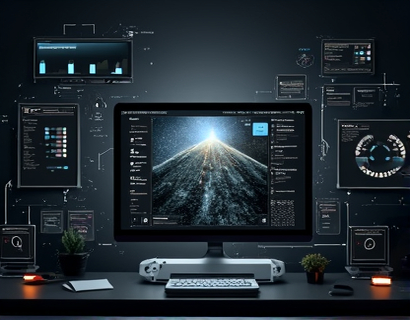Unlocking a World of Accessible Learning: Comprehensive Educational Resources for Students and Lifelong Learners
In today's rapidly evolving world, the pursuit of knowledge knows no bounds. The traditional constraints of time, location, and accessibility are being redefined by innovative digital platforms that offer a wealth of educational resources. These platforms are designed to cater to the diverse needs of students and lifelong learners, providing a comprehensive and accessible learning environment. This article delves into the significance of these resources, exploring how they empower individuals to enhance their educational journeys and foster a lifelong passion for learning.
The concept of accessible learning resources is not new, but the digital revolution has transformed the way these resources are delivered and consumed. Online libraries and educational platforms have become pivotal in breaking down barriers to education, making high-quality content available to a global audience. These resources encompass a wide range of formats, including articles, e-books, interactive courses, and multimedia content, ensuring that learners can engage with materials that suit their preferences and learning styles.
The Importance of Accessible Learning Resources
Accessible learning resources play a crucial role in democratizing education. They provide equal opportunities for individuals from various backgrounds, including those with disabilities, remote locations, or limited financial resources. By removing these barriers, digital platforms ensure that everyone has the chance to acquire knowledge and skills necessary for personal and professional growth.
For students, these resources offer supplementary materials that complement traditional classroom learning. They can delve deeper into subjects of interest, explore new areas of study, and gain insights from expert authors and educators. Lifelong learners, on the other hand, can continue their education at their own pace, fitting learning into their busy schedules and pursuing topics that spark their curiosity.
Diverse Range of Educational Content
The content available on these platforms is vast and varied, catering to a wide range of interests and educational levels. Articles cover topics from science and technology to literature and history, providing a rich source of information for readers. E-books offer in-depth explorations of specific subjects, often written by renowned experts in their fields. Interactive courses, on the other hand, provide structured learning experiences with quizzes, assignments, and feedback, making the learning process engaging and effective.
Moreover, these platforms often feature content tailored to different learning levels, from beginner to advanced. This ensures that learners of all stages can find relevant and challenging materials. For instance, a beginner in programming can start with introductory courses and gradually move to more complex topics, while an advanced learner can explore specialized courses that push the boundaries of their knowledge.
Interactive and Engaging Learning Experiences
One of the key advantages of digital educational resources is their interactivity. Unlike static textbooks, interactive courses and multimedia content engage learners through videos, simulations, and interactive exercises. These elements not only make learning more enjoyable but also enhance understanding and retention of information.
For example, a biology student can watch high-quality videos of cellular processes, interact with 3D models of molecules, and complete lab simulations to reinforce their learning. Similarly, a history enthusiast can explore virtual tours of historical sites, listen to podcasts, and engage with interactive timelines. This multi-sensory approach caters to different learning styles, ensuring that each learner can find the most effective way to absorb and retain information.
Community and Support
Beyond the content itself, these platforms foster a sense of community among learners. Forums, discussion boards, and social features allow learners to connect, share ideas, and collaborate on projects. This community aspect is invaluable, as it provides a support network where learners can seek help, share resources, and motivate each other.
Instructors and mentors are often available to provide guidance and feedback, further enhancing the learning experience. This personalized support is particularly beneficial for those who may not have access to such resources in traditional educational settings. The combination of peer interaction and expert guidance creates a holistic learning environment that promotes both academic and personal growth.
Personalized Learning Paths
Modern educational platforms use advanced algorithms and data analytics to offer personalized learning paths. These tools assess a learner's strengths, weaknesses, and interests to recommend tailored content and courses. This personalized approach ensures that each learner's journey is unique and optimized for their specific needs and goals.
For instance, a learner who shows a strong interest in data science might be recommended advanced courses in statistics and machine learning, along with relevant projects to apply their knowledge. This personalized guidance helps learners stay motivated and focused, as they see tangible progress in their areas of interest.
Continuous Updates and Innovations
The educational content on these platforms is continuously updated to reflect the latest developments in various fields. This ensures that learners have access to current and relevant information, which is crucial in rapidly evolving areas such as technology and science. Additionally, platforms often incorporate feedback from learners and experts to improve and expand their offerings, creating a dynamic and responsive educational ecosystem.
Innovations in technology, such as artificial intelligence and virtual reality, are also being integrated into these platforms. AI can provide intelligent tutoring systems that adapt to a learner's progress, offering real-time feedback and support. Virtual reality, on the other hand, can create immersive learning experiences that simulate real-world scenarios, making complex concepts more tangible and understandable.
Overcoming Challenges in Accessible Learning
Despite the numerous benefits, there are challenges to ensuring that educational resources are truly accessible to all. One major issue is the digital divide, where individuals in underserved areas may lack the necessary technology or internet access. To address this, initiatives to provide affordable devices and improve internet infrastructure are essential. Collaborations between educational platforms, governments, and non-profit organizations can help bridge this gap.
Another challenge is the quality and credibility of content. With the abundance of information available online, it is crucial to ensure that the resources provided are accurate, up-to-date, and peer-reviewed. Platforms must implement rigorous content review processes and partner with reputable institutions and experts to maintain high standards.
Conclusion
In conclusion, comprehensive educational resources offered by digital platforms are revolutionizing the way students and lifelong learners access and engage with knowledge. These resources not only provide a wealth of information but also create a supportive and interactive learning environment that fosters personal growth and a love for learning. By overcoming barriers and leveraging technological innovations, these platforms are paving the way for a more inclusive and dynamic educational landscape.
As we continue to embrace the potential of digital learning, it is essential to remain committed to accessibility and quality. By doing so, we can ensure that everyone, regardless of their background or circumstances, has the opportunity to unlock a world of knowledge and achieve their educational goals.










































